Dec 4, 2020
How carbon offsetting with solar lights cuts emissions, reduces poverty and saves lives
Namene Solar’s innovative carbon offsetting solar project is the first of its kind in Zambia. Our lights cut carbon emissions, reduce poverty and have truly life-changing impacts.
In rural Zambia, 90% of people live below the extreme poverty line, on less than $1.25 a day. This means they also live in energy poverty, without access to electricity.
They rely on dangerous, expensive fossil-fuel based lighting such as kerosene lamps. These lamps emit carbon dioxide and can cause fatal fires.
Our solar lights replace these outdated, toxic lamps with clean, renewable solar light at the push of a button.
Until now, getting solar lights into the hands of people living in energy poverty in Zambia has been limited by their affordability. But, by offsetting their carbon emissions with our Gold Standard-certified Verified Emissions Reductions, we’re breaking the affordability barrier for solar lights.
Here’s how it works…
What is the voluntary carbon market?
The voluntary carbon market serves businesses, government departments, NGOs and individuals who want to be accountable for their carbon footprint and help drive the transition to a low-carbon future. Recognised international standards, such as Gold Standard, exist to monitor and verify the quality and validity of the carbon credits that are traded in the voluntary carbon market.
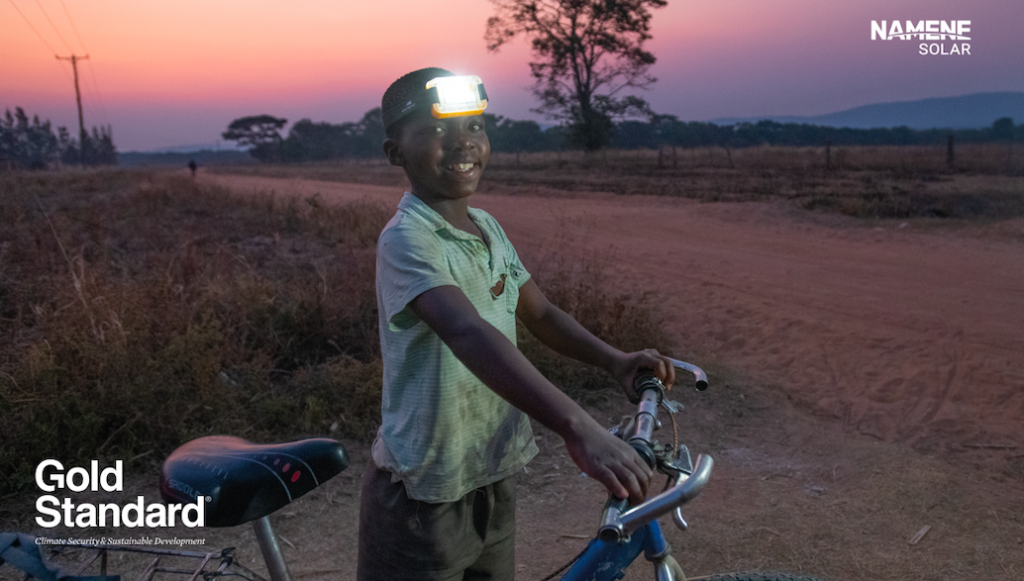
What is a carbon credit?
A carbon credit represents the removal of one tonne of carbon dioxide equivalent (tCO2e) from the atmosphere, or the avoidance of these emissions occurring in the first place.
One tCO2e is roughly the monthly energy consumption of an average American household.
Carbon credits are achieved when a project implements an activity or introduces a technology that reduces carbon emissions beyond what it would have been if the project did not exist.
That means the project activity is additional and contributes to reducing emissions from the atmosphere.
By purchasing carbon credits, a company, investor or eco-conscious individual is contributing to the fight against climate change and helping to finance a carbon project to take place and continue operating.
What does Gold Standard mean?
Gold Standard for the Global Goals is an international standard that sets requirements to design projects for maximum positive impact in climate and development — and to measure and report outcomes in the most credible and efficient way.
Every Gold Standard certified project must include gender-sensitive and inclusive stakeholder design. This means it is designed with input from the people who are going to benefit from the project.
It must follow environmental and social safeguarding principles, and contribute toward at least three Sustainable Development Goals (SDGs), ensuring the greatest impact is delivered for every dollar channelled to projects. You can read more about it at: https://www.goldstandard.org/impact-quantification/gold-standard-global-goals
How do you measure the project impact?
Our projects contribute to at least 3 of the UN’s Sustainable Development Goal (SDGs) and have positive impacts that ripple out beyond these in households and communities.
As a part of the Gold Standard certification process, our projects adhere to the ‘do no harm’ principle, consult with local stakeholders, and we ensure the projects not only help protect the climate by contributing to SDG 13, Climate Action, but also benefit local communities by contributing to two additional SDGs, such as SDG1: No Poverty, and SDG 7: Sustainable Energy for All.
Impacts are monitored during the whole project and reported as part of the Gold Standard certification process. This ensures that our project impacts are real, measurable, and verified by an independent third party.
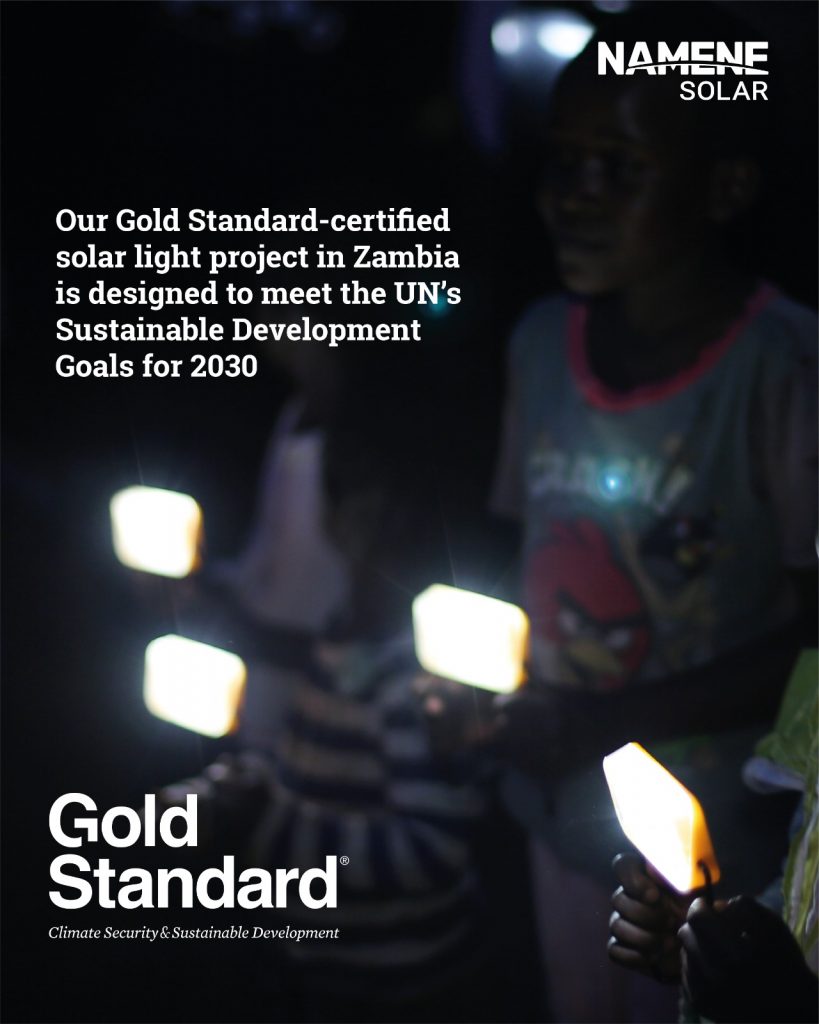
How can I offset my carbon emissions?
After reducing your emissions as much as possible, purchasing carbon credits is another way to take climate action beyond your own area of influence. Carbon offsetting allows organisations and individuals to support the transition to a low-carbon future. You can calculate your carbon emissions using an online carbon footprint calculator, such as the offered by WWF UK.
If you are an organisation interested in buying carbon credits from Namene Solar, please get in touch with us at climate@namenesolar.com.
Where can I get more information?
If you want to learn more about our products, our projects or if you are interested in purchasing carbon credits, please contact us at climate@namenesolar.com.
Related Stories
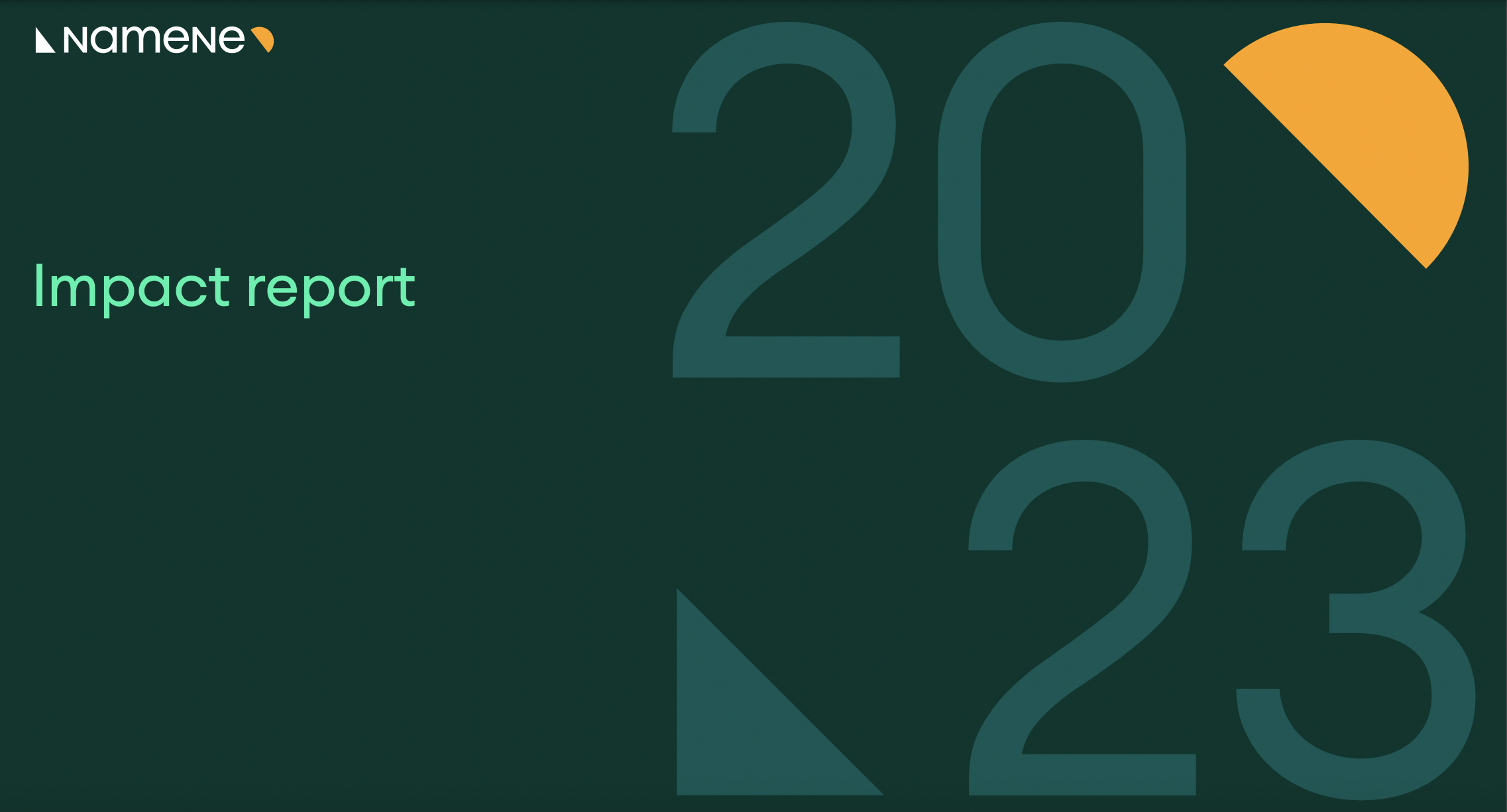
Impact Report 2023: being accountable for our impact
This week marks an important milestone for Namene with the release of our first-ever Impact Report. The report covers key metrics on our impact to date as well as highlights from 2023.
Read More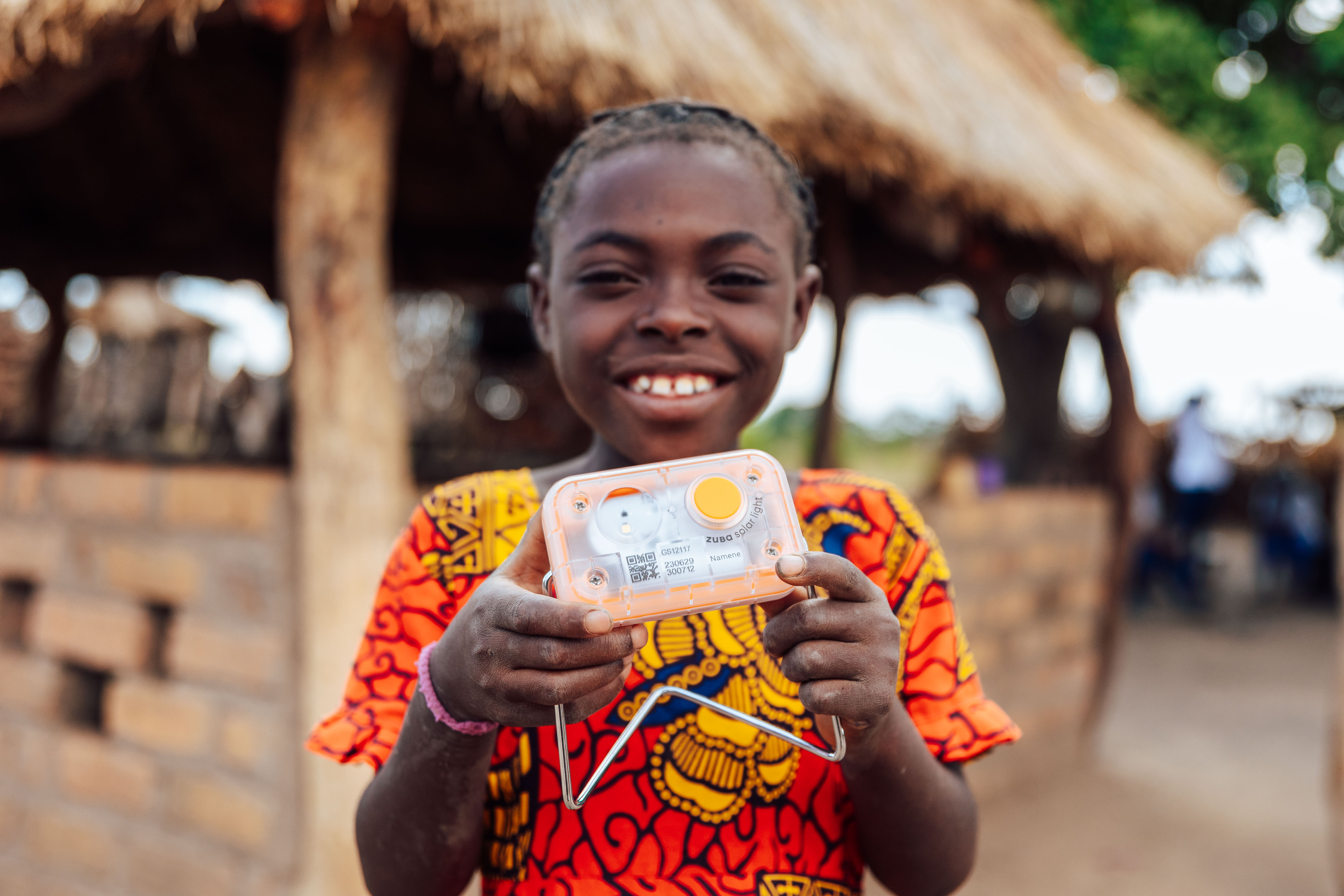
The biggest impacts of Namene’s carbon project in Zambia
At Namene, we empower off-grid communities in Zambia with access to safe and sustainable lighting though our carbon projects and carbon credits.
Read More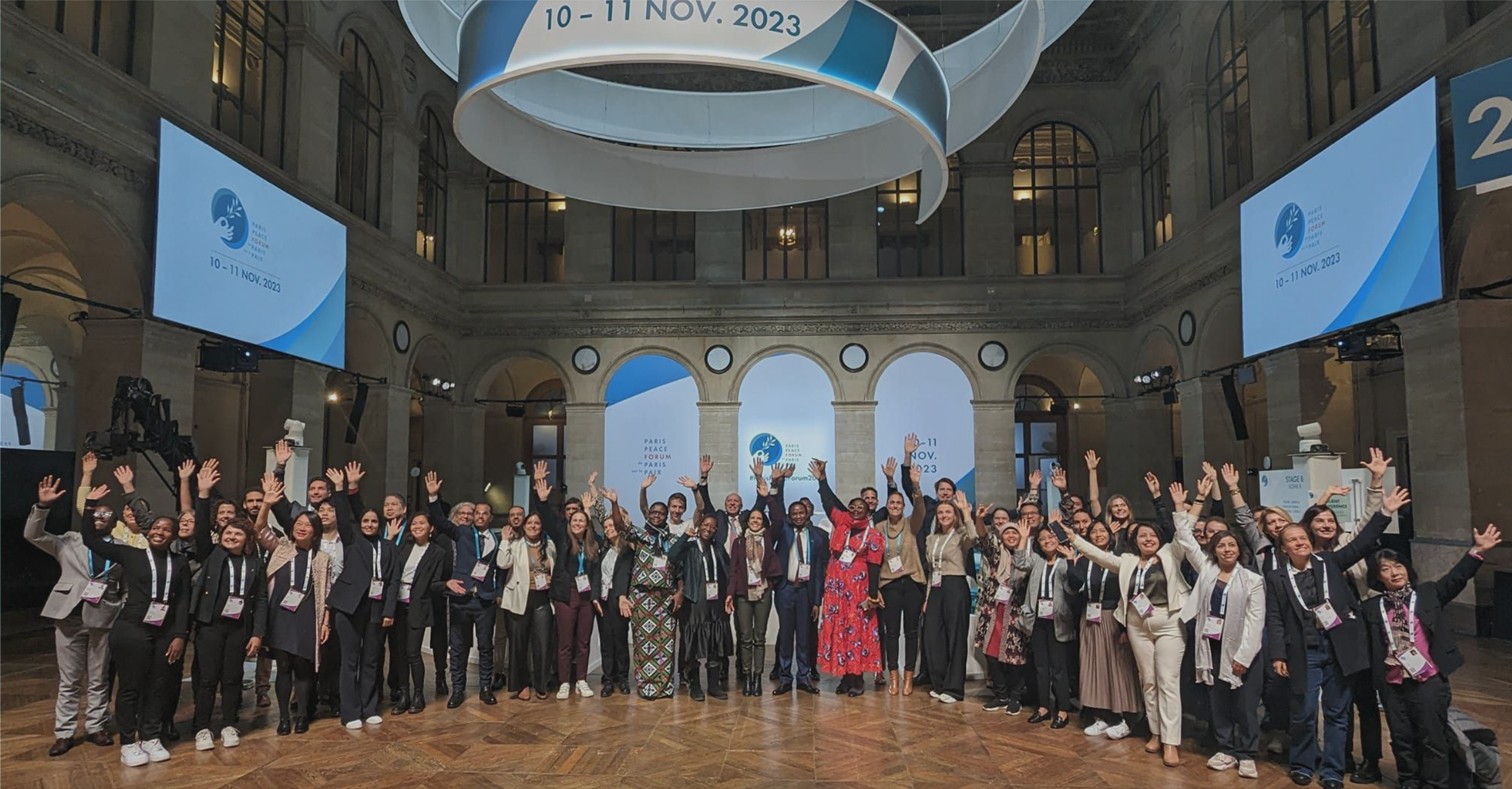
Collaborating for peace: Namene at the Paris Peace Forum
Namene's Head of Climate Bernardo Lazo reflects on the Paris Peace Forum, where Namene showcased how our carbon credits help end energy poverty and climate inequality.
Read More